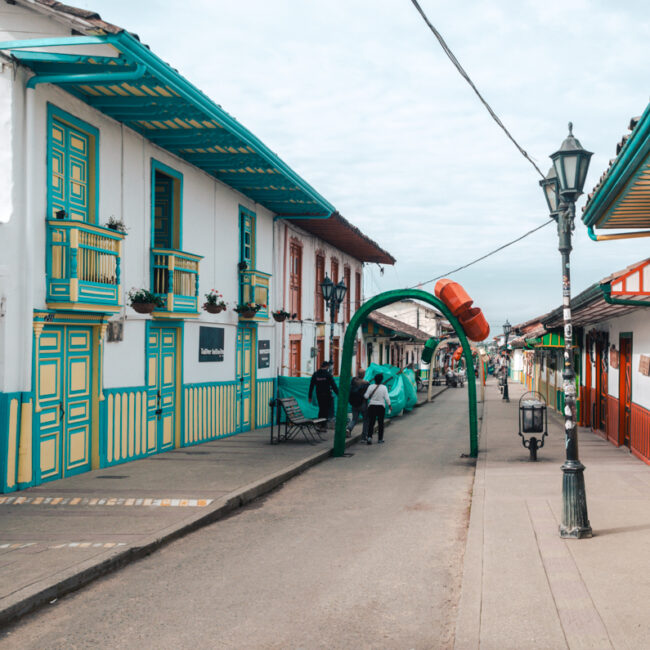

Medellin, the city of eternal spring, is a destination you shouldn’t skip on your trip through Colombia. Its violent past, with drug wars and a lot of criminality, seems to have calmed down and today, the city is a pleasant place to visit. Many parks in Medellin offer a refreshing break from the noise of the city. In this post, we’ll delve deeper into everything you need about Medellin’s botanical garden. Here we go!
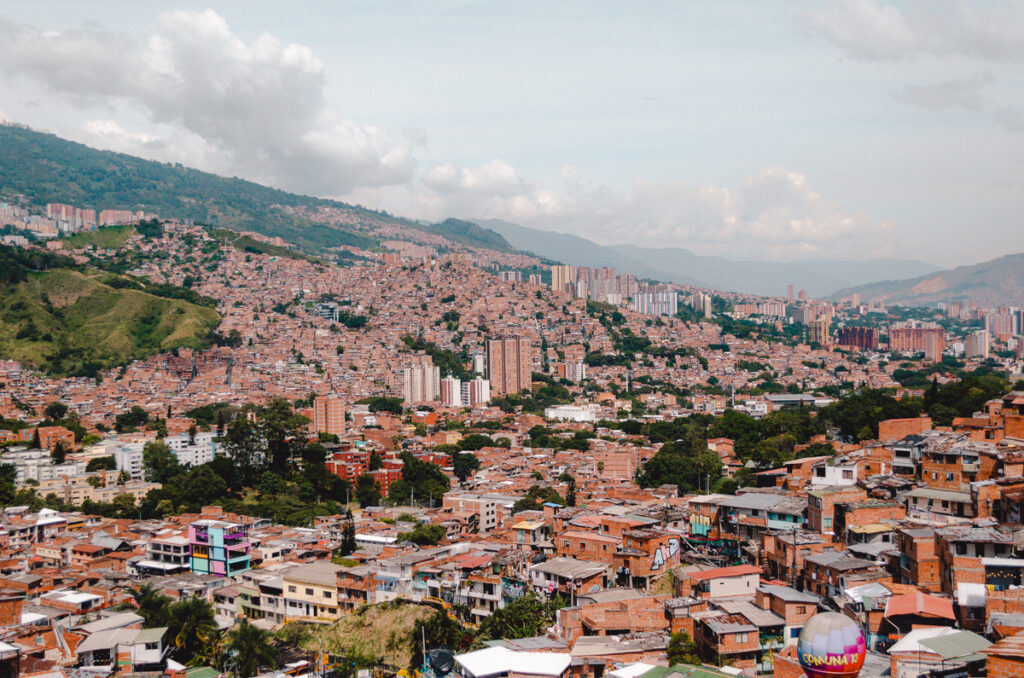
Medellin, Colombia
Medellin, often called the City of Eternal Spring, is located in the heart of Colombia’s Aburra Valley. Once in the international news every day for its turbulent past, today, Medellin has reinvented itself into one of Latin America’s most fascinating destinations.
The city’s pleasant climate, with average temperatures hovering around 22°C (72°F), is perfect for exploration and relaxation, year-round and you can find a lot of digital nomads here spending the winter days.
As you wander through Medellin’s lively streets, you’ll discover a city that thrives on creativity and resilience. The innovative MetroCable system is one of the most remarkable features in the city which doesn’t only show their commitment to sustainable urban mobility but also offers breathtaking views of the green landscapes around the city.
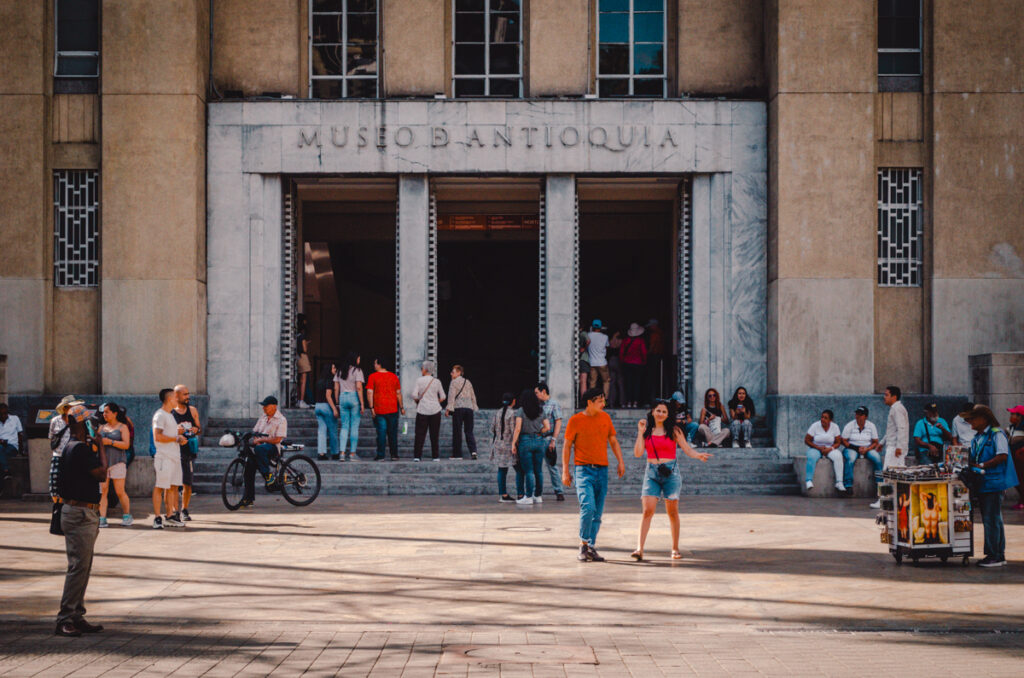
Museo d’Antioquia, Medellin
Art, culture, and self-expression have become a way of life here, with vibrant street art, museums like the Museo de Antioquia, and cultural events that celebrate the city’s forward-thinking spirit around every street corner.
Medellin’s transformation is most noticeable in the Comuna 13 neighborhood, which has evolved from a troubled area in the 1990s into a symbol of renewal and community strength. known for its colorful murals and electric atmosphere, a tour to Comuna 13 should definitely be on your to-do list!
Meanwhile, the city’s lush parks, like Arvi Park and the Jardin Botanico, are wonderful green lungs in the city. Here is what you need to know to prepare for a visit to the botanical gardens of Medellin!
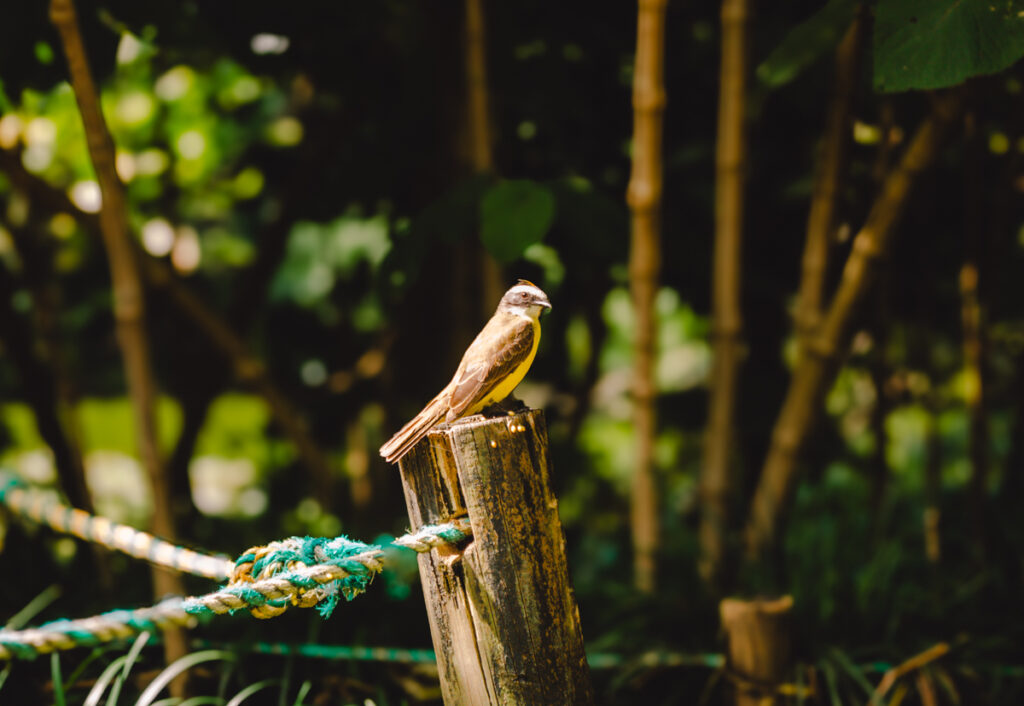
Located in the center of Medellin near the University of Antioquia, the Jardín Botanico de Medellin “Joaquín Antonio Uribe” is a lovely green lung and a sanctuary of biodiversity and tranquility in the city.
This 14-hectare green oasis is a haven for nature lovers, as you can find a rich collection of flora from Colombia and around the world. It serves as a living museum where you can immerse yourself in a variety of ecosystems, from tropical forests to desert-like environments.
With over 4,500 flowers and 139 recorded bird species, it offers a unique opportunity to experience the region’s biodiversity.
I have to be honest though here and say that I have visited more impressive botanical gardens in the world, like the Batumi Botanical Garden in Georgia. Nevertheless, this park is a great addition to your Medellin itinerary, especially because you can see turtles and iguanas here!
As with any botanical garden, the Jardin Botanico de Medellin is divided into various gardens or thematic areas, each with a different type of flora and ecosystems. Here are the main areas you can find inside the Medellin Botanical Garden.
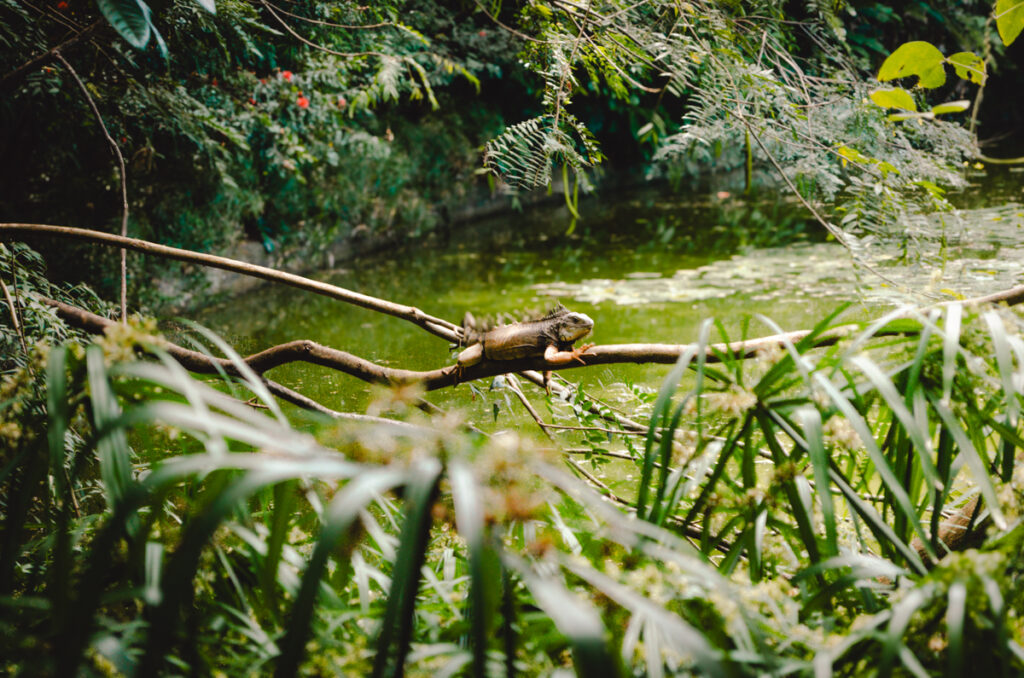
This area was one of favorites inside the park because of the many iguanas, turtles and fish that could be seen here. This section emphasizes the importance of aquatic and wetland ecosystems, featuring a serene lake surrounded by lush vegetation.
You can find benches around the lake where you can sit for hours, watching the wildlife that resides in the park.
The lake is named after Francisco José de Caldas, a Colombian scientist, and a key figure in the Colombian independence movement, known for his work in scientific fields like geography and natural sciences.
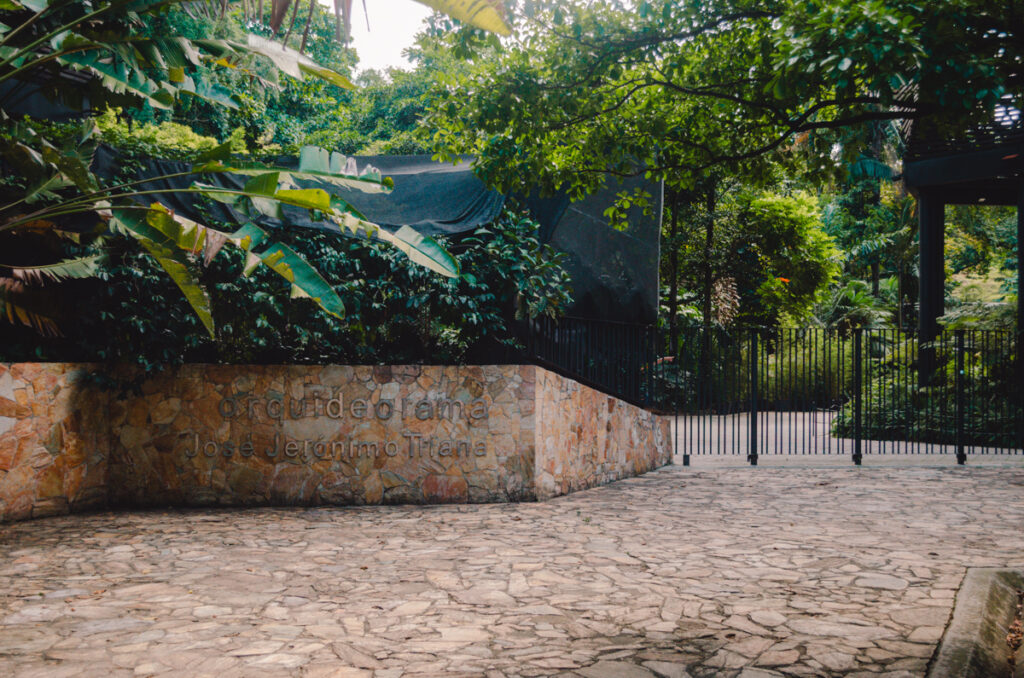
The Orquideorama in the Jardin Botanico de Medellin is a remarkable architectural marvel and a centerpiece of the botanical garden. It reminded me a bit of Singapore because of its futuristic appearance.
The Orquideorama serves both as a shelter for the garden’s giant collection of orchids, bromeliads, ferns, and other plants and as a venue for cultural and educational events.
The innovative, modular structure is quite impressive because it resembles a series of interconnected hexagonal wooden frames or “flowers.” This not only creates an aesthetically pleasing pattern that mimics the natural shapes found in forests but also allows for natural light to filter through, creating an ideal environment for plant growth.
The Garden of the Palms (Jardin de las Palmas) in the Jardin Botanico de Medellín is an area focused on showcasing a diverse collection of palm species.
This section is an essential part of the botanical garden, reflecting the significant diversity and ecological importance of palms within Colombia and the tropical regions of the world.
If you are in Colombia, you will probably visit the unique Cocora Valley with its towering Wax Palms, the national tree of Colombia. You can probably find them in the park, but I can’t remember that I saw them here.
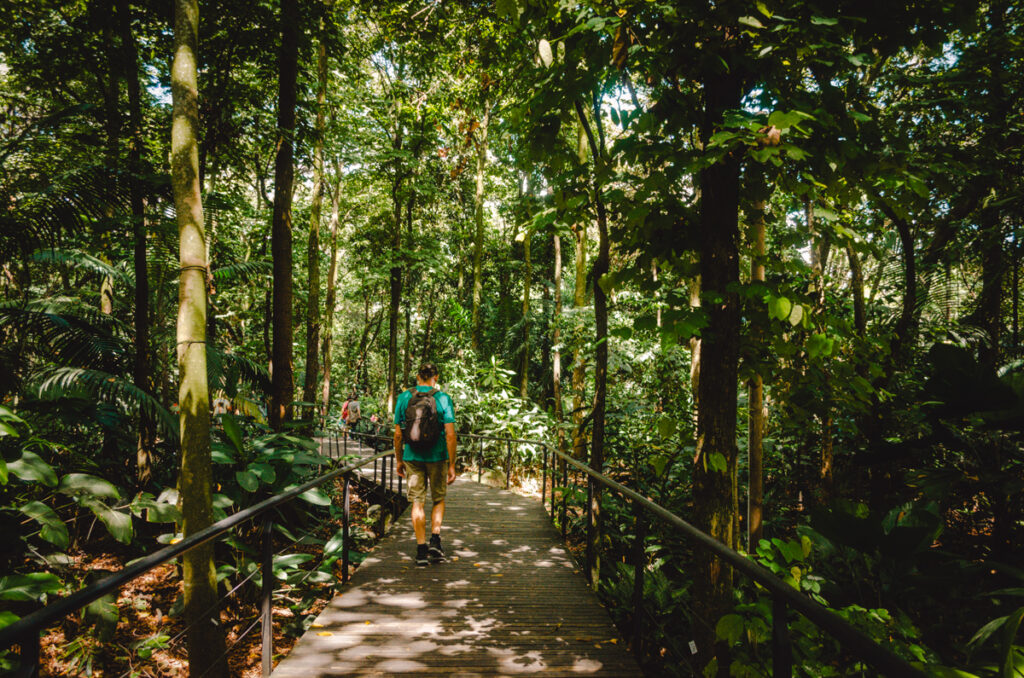
The Tropical Forest section within the Jardín Botanico de Medellin is designed to mimic the lush, biodiverse environments found in Colombia’s tropical rainforests. It serves as an educational experience, highlighting the importance of conservation and the rich biodiversity of the country’s natural habitats.
The Tropical Forest is landscaped to recreate the dense foliage, towering trees, and diverse undergrowth characteristic of a natural rainforest ecosystem. It provides you an opportunity to walk through a simulated tropical environment on wooden walkways offering a close-up view of the variety of tropical plant species, like various types of ferns, bromeliads, and epiphytes.
The Desert Garden at the Botanical Garden of Medellin is a specialized section designed to show the unique and adaptive flora that thrive in arid and semi-arid environments. It demonstrates the beauty and diversity of desert plants, including a variety of cacti, succulents, and other drought-resistant species.
Here, you can learn about the different survival strategies these plants use to cope with extreme conditions such as limited water availability and high temperatures.
While the area in the park is less impressive compared to other sections, I did like it because it reminded me of my visit to the Tatacoa Desert near Neiva and Villavieja.
The Medellin Botanical Garden offers lovely and serene landscapes in the heart of one of Colombia’s most vibrant cities. It’s a place where nature lovers, families, and tourists can explore and learn about the rich biodiversity of the region. Here’s why you should make it a must-visit destination on your trip to Medellín!
In the middle of the urban landscape of Medellin, the Botanical Garden is a lush, green oasis offering a peaceful retreat from the bustle of city life. With its large collection of flora, including native and exotic plants, the garden is a natural escape that rejuvenates the mind and body.
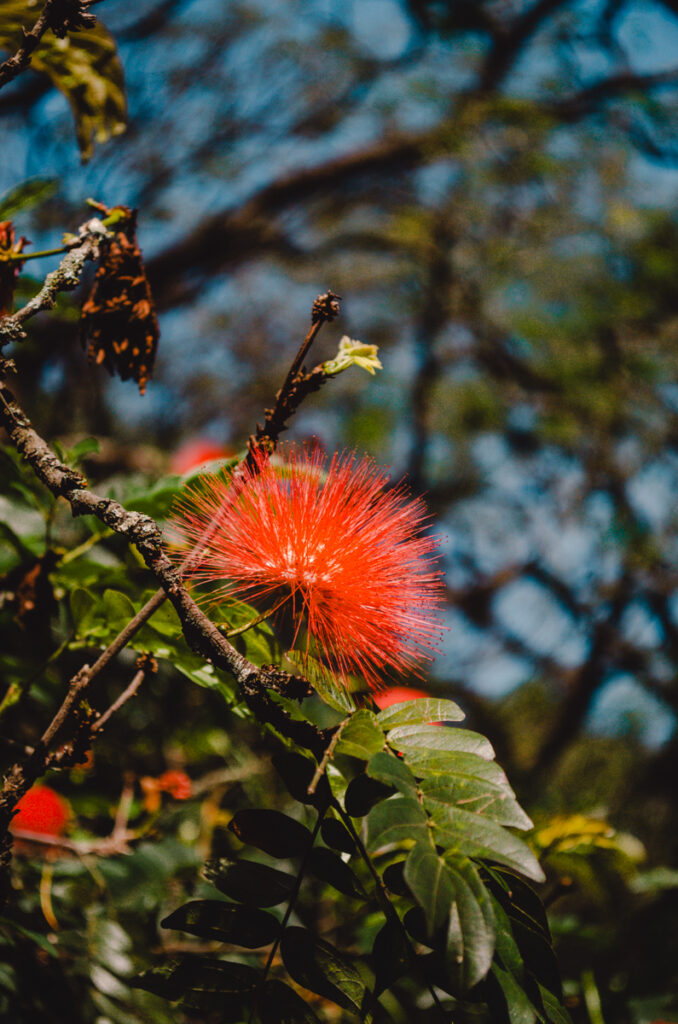
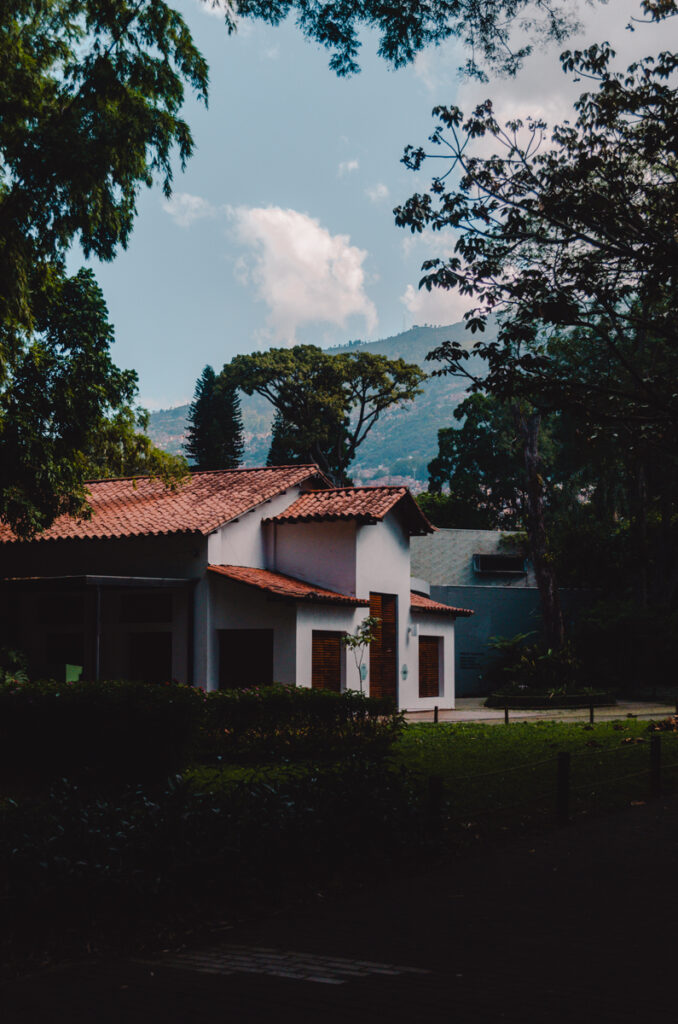
Flowers and buildings inside the park
Walking through the garden, you can enjoy the tranquil ambiance, watch quirky iguanas go about their day, and enjoy the refreshing shade provided by towering trees and dense foliage.
The Botanical Garden is not only a sanctuary for plants but there’s also plenty of wildlife to see, particularly birds and insects, which thrive within its diverse ecosystems.
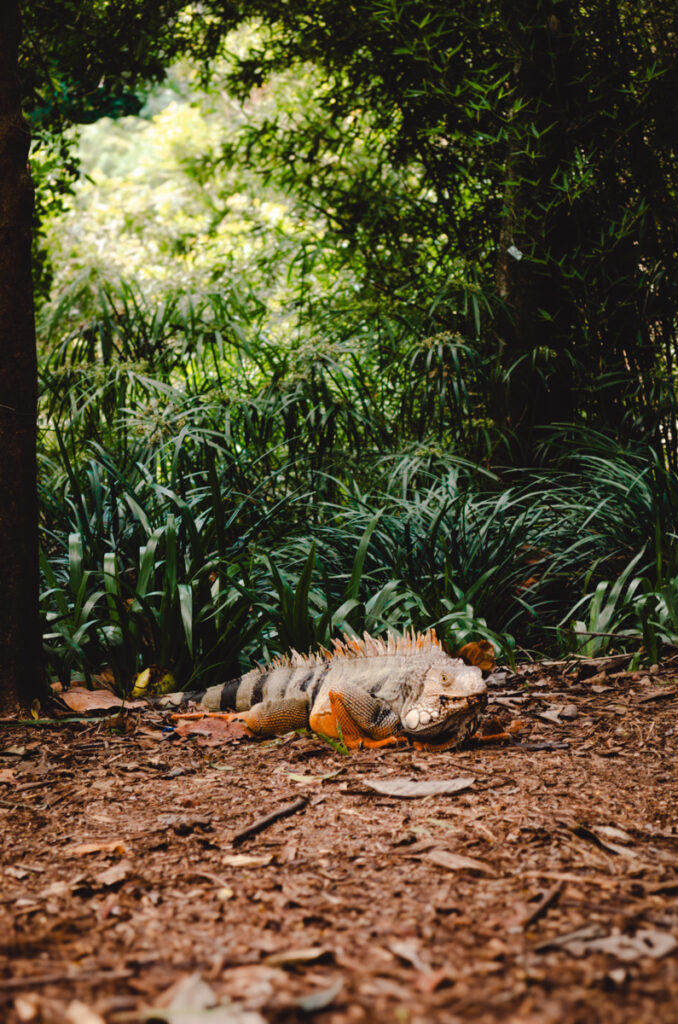
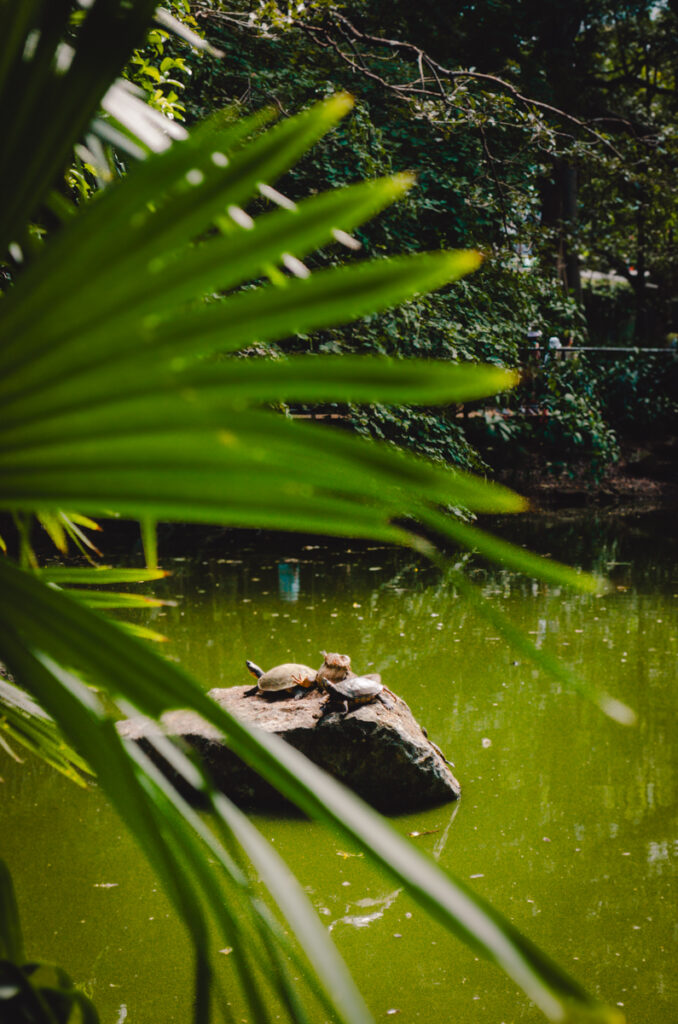
Iguanas and turtle are lazing around the lake
Around the lake, you can also find many iguanas and turtles. You’ll have to look for them a bit maybe, but they are definitely there!
They don’t shy away from humans anymore and have gotten pretty used to being an object of observation but don’t come too close to the big iguanas. Iguanas are not aggressive but they can whip their tail when they feel threatened and that can hurt!
Also, as you probably know as a conscious traveler: don’t feed them. Don’t feed wildlife. Ever!
One of the garden’s most mesmerizing attractions is the Butterfly Garden (Mariposario), where you can walk among hundreds of beautifully colored butterflies.
This enclosed space mimics the natural environment of these delicate creatures, offering you a close-up look into their life cycle and behaviors. It’s an educational and magical experience!
Note that this is a paid activity inside the park. Tickets cost 7000 COP and can be bought at the ice cream stall near the entrance.
To learn even more during your visit, the Botanical Garden offers guided tours led by knowledgeable guides who provide insightful information on the plant species, ecosystems, and conservation efforts within the garden.
The tours are completely free of charge but only happen on Tuesday at 11 A.M., on Thursday at 2 P.M., and on Saturday at 11 A.M. and 2 P.M. Note that they are Spanish-only.
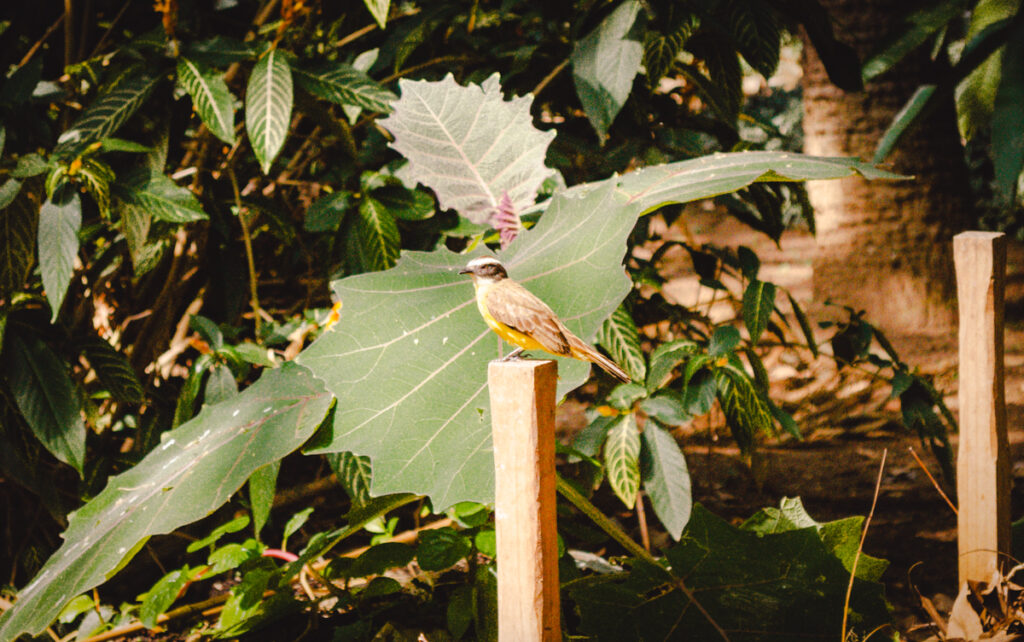
Birds inside the Medellin Botanical Garden
The entrance to the Botanical Garden of Medellin is free of charge both for locals and tourists. However, you do need to register yourself to enter the park and you need to show your passport so make sure you have it with you!
Special events and exhibitions are often held in the park and during these events, there might be separate fees applicable. Also, the entrance to the butterfly garden, as mentioned before, costs 7000 COP.
The Botanical Garden of Medellin is open from Tuesday to Saturday between 9 A.M. to 4 P.M.
They are open on Mondays too if a particular Monday turns out to be a holiday. If that’s the case, they are closed on Tuesday.
Here are the websites I use when I travel to Colombia:
Booking.com: For the best guesthouses, homestays, or small hotels
Hostelworld: To find the best hostels located in the cities
Homestay: For a unique immersive homestay experience in the big cities or the countryside
Busbud and Redbus: The best transport websites for long-distance buses in Colombia. Note that 12Go also works in Colombia but the tickets they will buy for you are open-seat tickets and don’t guarantee a seat on the bus you book online.
Uber: Uber is a convenient and cheap ride-hailing app that can be used in the bigger cities of Colombia. Other apps are Cabify or Didi.
Skyscanner: For affordable flights to Bogota and intercity flights in the country.
Viator and Get Your Guide: book all kinds of activities from the Ciudad Perdida trek to a guided private tour of Comuna 13 in Medellin.
Citizens of many countries, including the United States, Canada, the European Union, Australia, and New Zealand, do not require a visa for short tourist stays (typically up to 90 days). However, this can vary, so it’s always best to check iVisa for the specific requirements for your nationality.
If you’re looking for travel insurance, the one with the best benefits online is undoubtedly Heymondo! It’s very easy to ask for a quote on the website and, if you book with this link you’ll get 5% off!
Access mobile data immediately when entering the country with a Colombian E-sim or a Latamlink E-sim when traveling through multiple countries. If you are already in Colombia, the best local prepaid sim card is Claro.
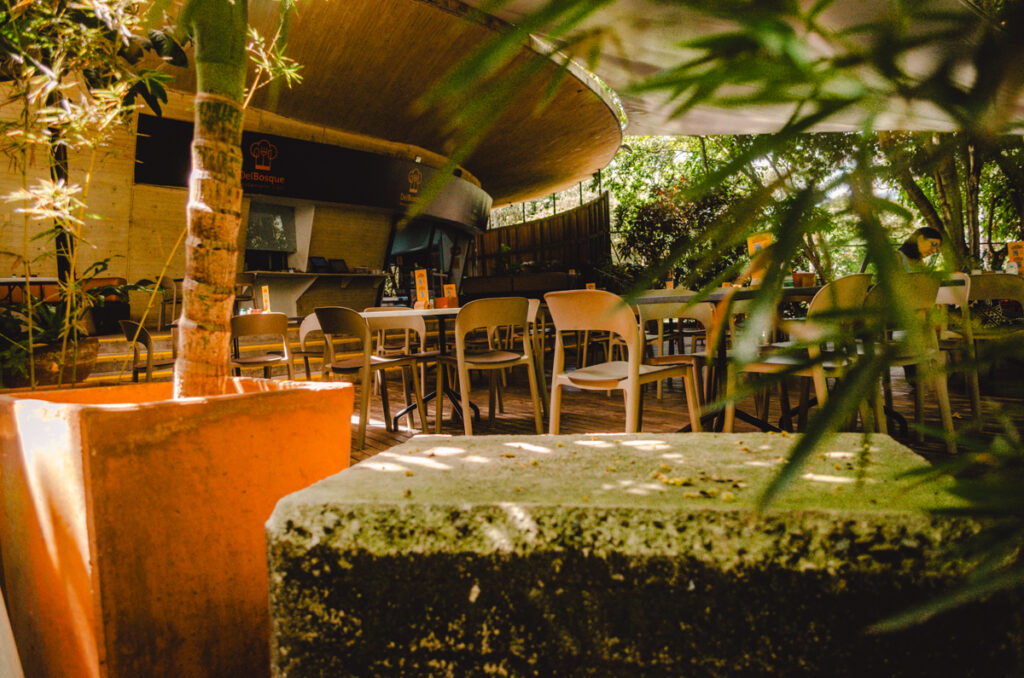
Jardin Botanico, Medellin, Colombia: del Bosque Café
There are three places inside the Botanical Garden of Medellin where you can get a drink or a bit to eat. I haven’t personally tried any of them because I found the prices to be pretty inflated on the menu of one of the locations. But, maybe this was due to one of them being a gastronomic restaurant!
Here are the three cafes and restaurants inside the park.
You can find the Del Bosque Café at the entrance of the park. It serves a wide array of dishes, both international and Colombian (check the menu here). They have a Colombian menu del Dia here if you feel like having lunch but I’m not sure if you should go for it.
Quite a few travelers mentioned in their reviews that they got food poisoning after eating here so it might be safer to go somewhere else!
Local Colombian food is easy to find in the city and there are also plenty of good vegan restaurants in Medellin for plant-based foodies!
La Estacion is a cozy space in the middle of the park with a lovely terrace and outdoor seating. Next to it, you can also see an old railway wagon which gives the place a unique look.
While it looked very cozy and inviting, after reading reviews from visitors, it seems that the service lacks professionalism and good manners. Let me know if you did visit, though!
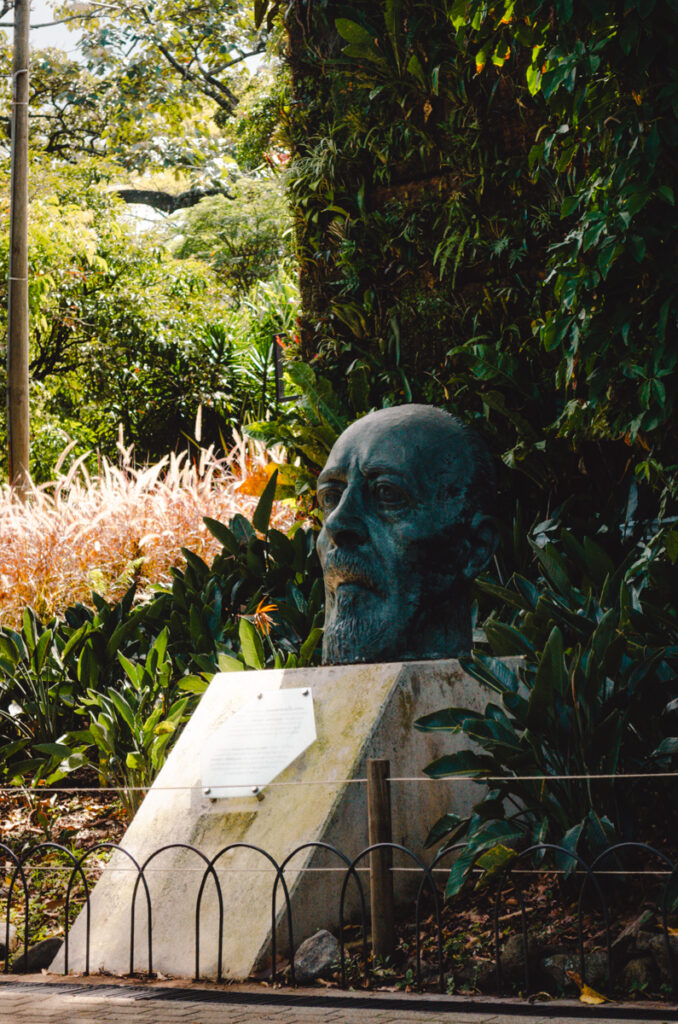
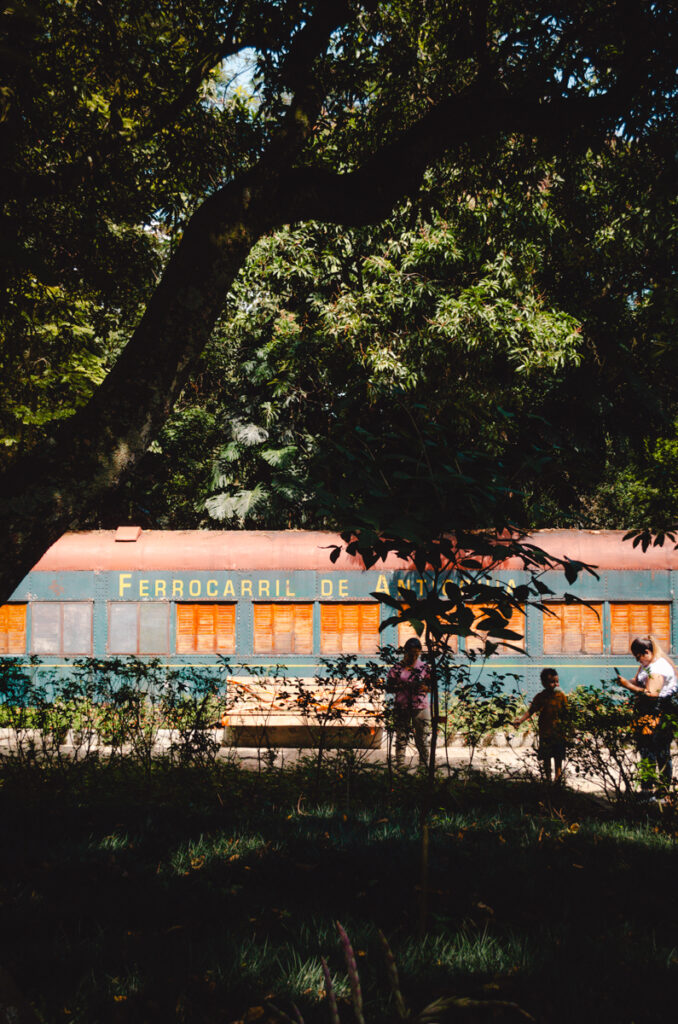
Old railway wagon and statue of Joaquin Antonio Uribe
The only restaurant that seems to be truly worth visiting inside the park is In situ. You can find In Situ in the north of the park near the Patio de las Azaleas.
This is a wonderful fine dining restaurant offering amazing fusion dishes from pasta and soup to salads and various meat and fish dishes. Reservations are required (you can make them through the park’s website) and note that there are few vegan options on the menu.
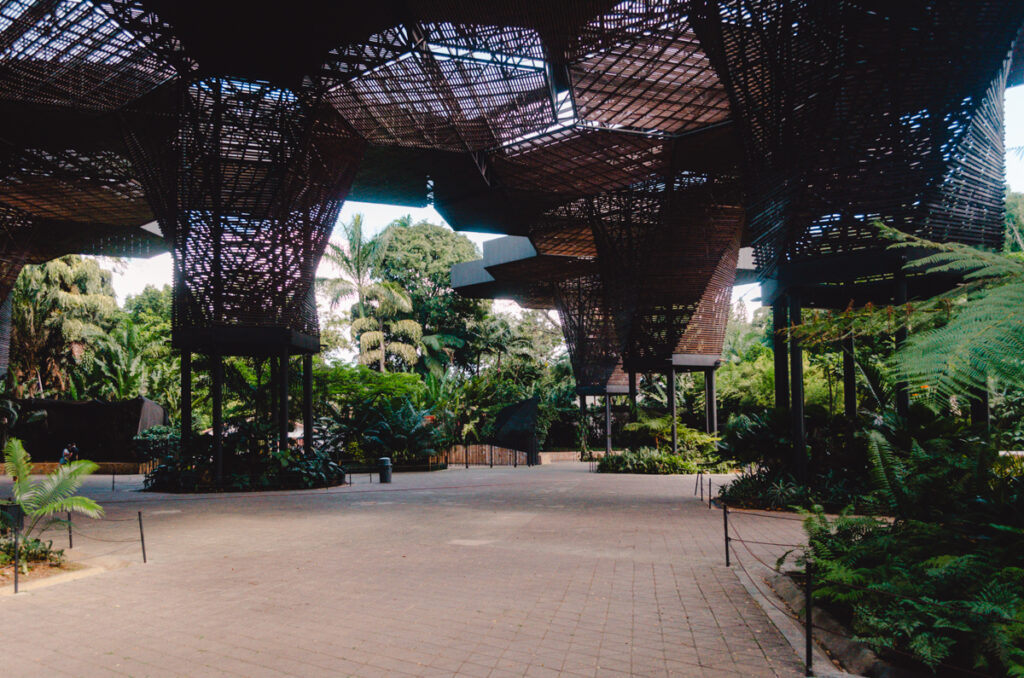
Inside the Orquideorama
Getting to the Jardín Botanico de Medellin is very easy thanks to the city’s well-organized public transport system. Here are the various transport options that you can choose from to reach the botanical garden.
The Medellin Metro is the most efficient way to reach the Jardin Botanico. The closest metro station is Universidad Station on Line A. After exiting the station, it’s just a short walk to the garden.
Coming from El Poblado, this is just a few stops on the metro but it’s not that easy if you are staying in some parts of Laureles. We took a bus first to Floresta and embarked on the metro there.
Also, note that there are two types of rechargeable cards that you can get to take the metro. In most stations, you can only get a “tourist card” that cost a lot considering Colombian standards!
The best thing to do is purchase a free “Civica card” if you plan to take the metro a lot. This card is issued for free at the stations of San Antonio, San Javier, Itagui, and Niquia. Do note that you need to have a valid identity document (your passport if you are a tourist) to get one.
Medellin’s transport system includes a large fleet of buses and some of them stop near the Jardín Botanico. Figuring out the schedules is not that easy though and they also aren’t a super-fast option.
Look for buses heading towards the Universidad de Antioquia, as many of these stop near the garden. Key bus routes include those running along Carrera 65 and Calle 67. Ask the driver to let you off at the stop closest to the Jardín Botánico or the Universidad de Antioquia.
The Moovit app or a similar public transport app on your phone might come in handy.
Taxis in Medellin are easy to find and a convenient, though more costly, way to reach the Jardín Botanico directly from any part of the city.
However, be careful flagging one down just on the street. While Colombians are generally honest, scams do occur. For safety, use app-based taxi services like Uber or Didi, where you can track your route and fare in real time.
The yellow cabs also use Uber to pick up people and the charge is way less on the app than what they will charge you without using the app.
If your accommodation provides bicycles, biking to the Jardin Botanico is also a viable option. Medellin is a generally safe city for biking and provides a decent network of bike lanes, making it enjoyable to cycle around the city.
There are bike racks available at the garden where you can store your bicycle safely. The route along the river is particularly scenic and has bike paths for much of the way.
Alternatively, you also opt to use a bicycle provided by Encicla, a government-owned bike rental system. Look for blue bike stations, they are spread out all over the city!
There you go! I hope you enjoyed this post about the Botanical Garden of Medellin.
Let me know in the comments below if you have any questions or drop me a message through my contact page.
Also, don’t forget to check out my resources page with my favorite booking platforms and tips to start planning your trip. Additionally, have a look at my favorite travel gear if you want to pack more consciously!
ENJOY!
Disclaimer: This post may include affiliate links. If you click on them, I may receive a commission at no extra cost to you.

Hi! I am Annelies and this is Travelers & Dreamers, a blog about conscious travel which means traveling in a more mindful way, with a positive impact on the world and yourself!
On this website, I cover different topics like slow travel, plant-based food guides, responsible travel, sustainable packing, eco-travel, and more!
Latest Posts

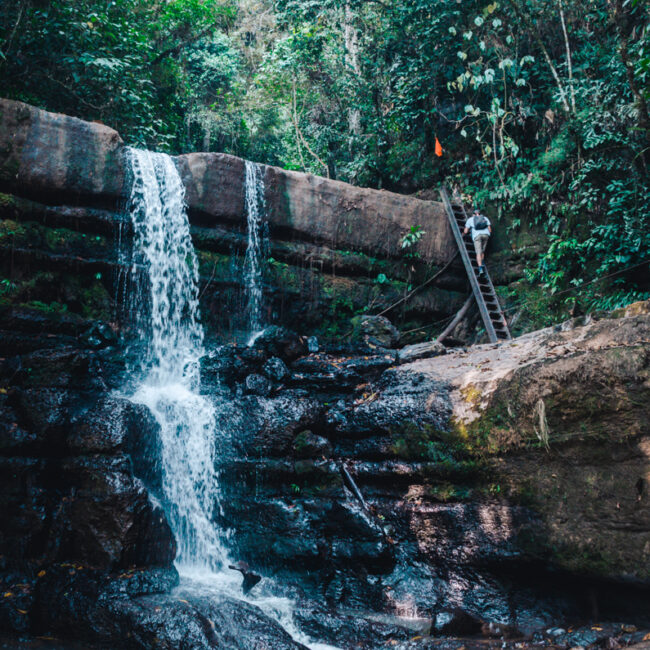

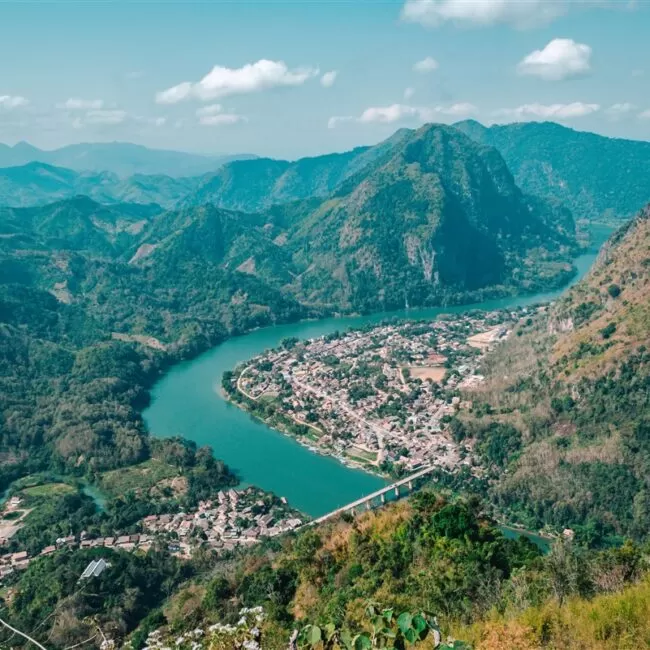
15 Best Things to Do in Nong Khiaw, Laos (2024)
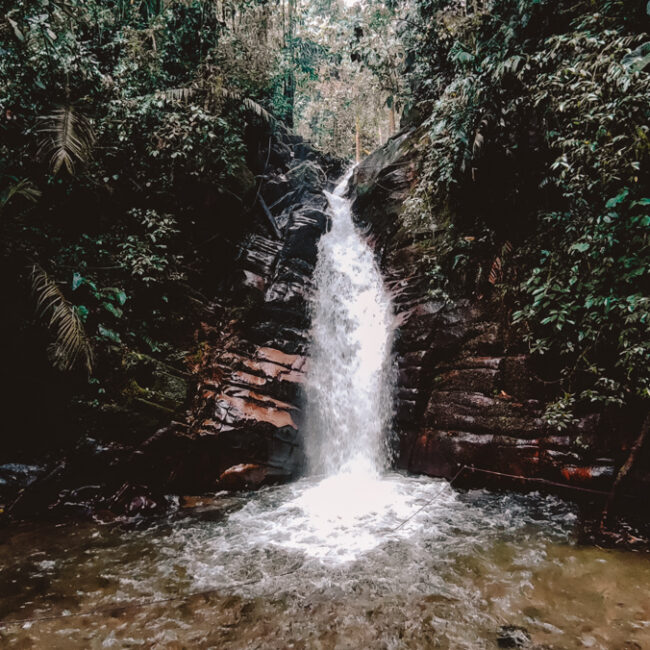
Santa Rita, Salento: All You Need to Know
Do you want to receive my latest finds on conscious and sustainable travel directly to your inbox? Subscribe here!
© COPYRIGHT TRAVELERS&DREAMERS, 2023.